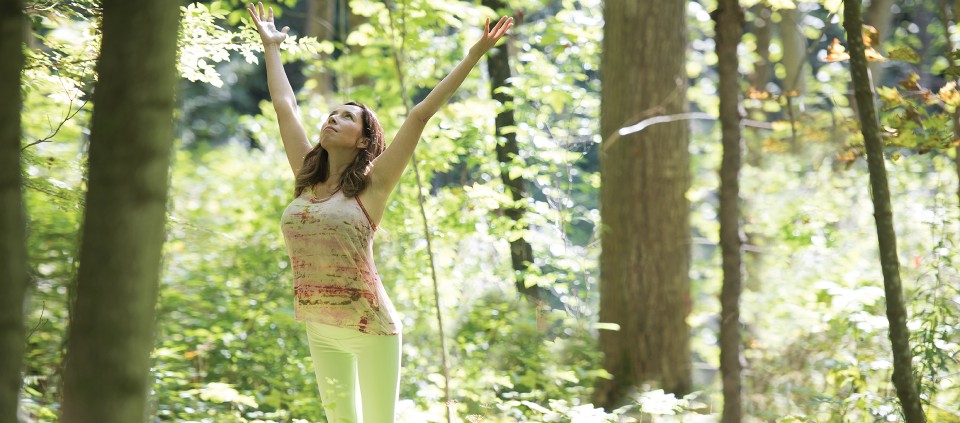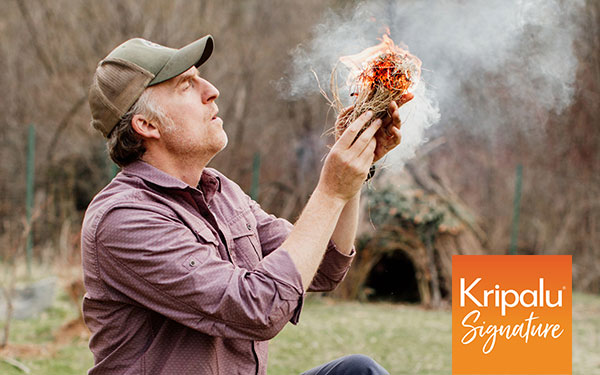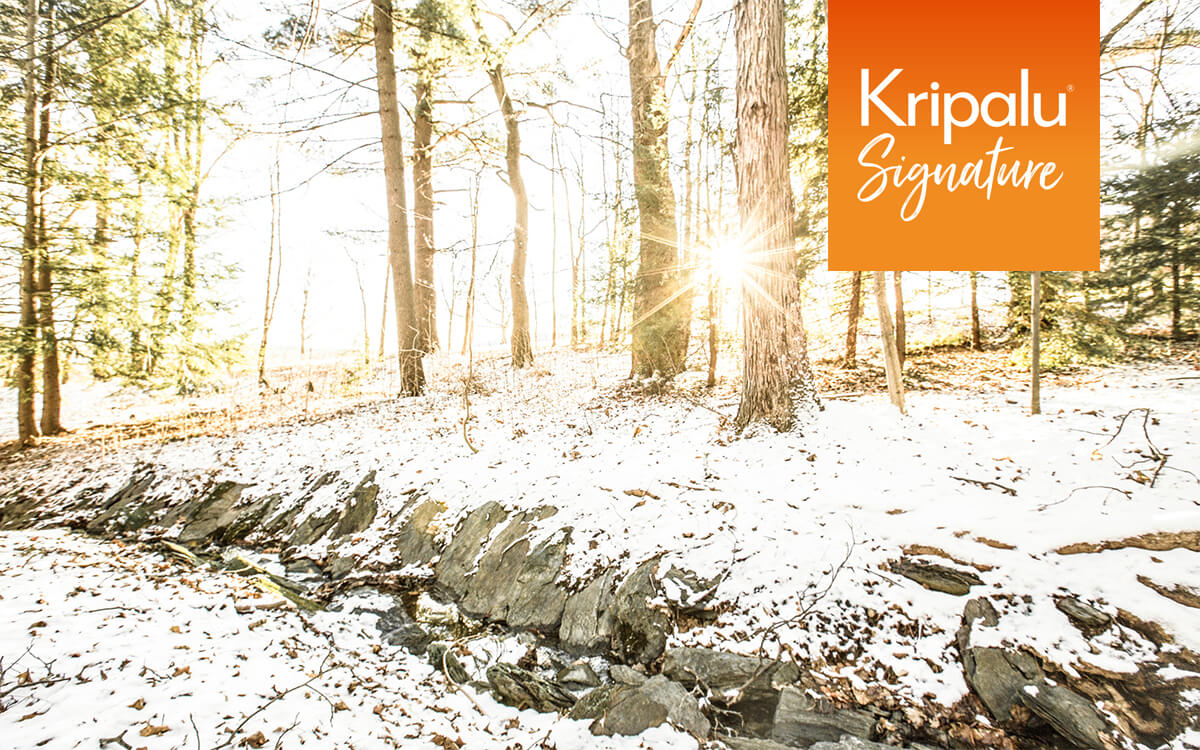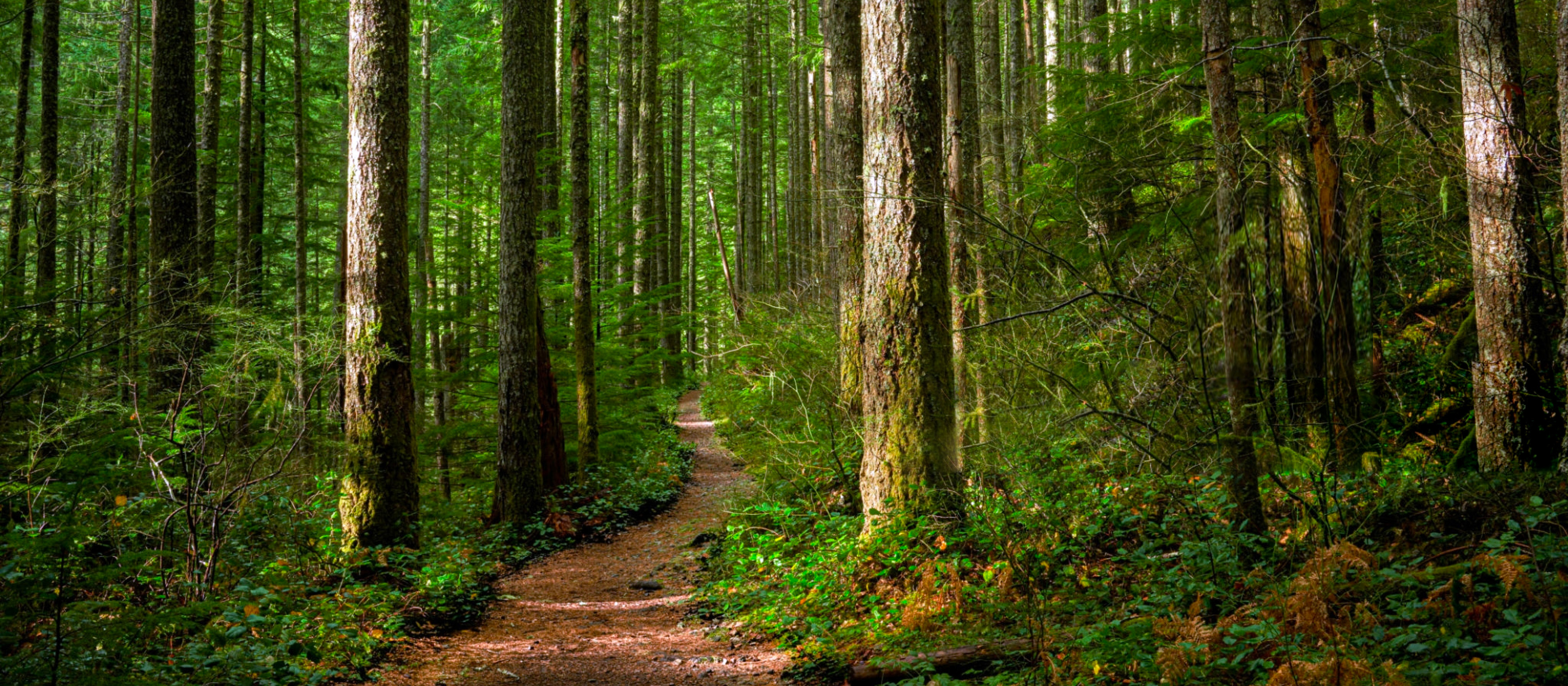The Art and Science of Forest Bathing

by Kimberly Jordan Allen
There’s magic in the air when we are in nature. The light through the leaves, the mist floating in the hills, the sound of rushing water, the smell of pine and fir. All of it captivates and soothes us—we know this intuitively, though we may not experience it daily. The natural world provides centering, grounding, and calming.
Most of us spend the majority of our time disconnected from the wild: Studies reveal that we spend approximately 93 percent of our time indoors—leading to what’s known as nature deficit disorder. Meanwhile, lifestyle-related diseases are the highest causes of death in the West, and they are directly related to the choices we make. But we can reverse this pattern at any time.
Research shows that time outdoors is a critical component of overall health, benefiting us physically, mentally, and emotionally, and reconnecting us to our sense of self. This connection expands beyond the natural rhythms of our bodies and the seasons, to our contact with each other and the larger context within which we live—our environment. As the benefits become increasingly clear, doctors are even prescribing time in nature—sometimes known as forest bathing.
What is forest bathing?
Forest bathing (called “shinrin-yoku” in Japan) is defined as the time we spend in the forest for its preventative health benefits. The practice took hold in the 1980s, and the idea is to allow the woods to wash over us as our senses are infused with the experience of being in the woods—the feelings, sights, sounds, smells, etc.
“For me the aim of forest bathing is presence—building a relationship and fostering communication with the more-than-human world,”says Kripalu Yoga faculty, life coach, and artist Jess Frey. “It means developing a meaningful relationship to nature based on feeling and sensory experiences. In addition, it brings a greater sense of connection, intimacy, refuge, and communion to that which is bigger and beyond—the larger interconnected web of life and remembering that I am a part of it.”
For Jess, time in nature is not only healing, it’s sacred. “We have become a nature-starved culture,” she says. “We are often in a rush somewhere else, running somewhere and never fully arriving.” When we immerse ourselves in the forest, we create space to land, breathe, and simply be.
The science backs up the experience. Time in the woods can decrease cortisol levels—which directly minimizes perceived anxiety. Furthermore, phytoncides—antimicrobial organic compounds emitted by plants to protect them from harmful organisms—are known to positively influence human health. One study found that the phytonicides released by trees can positively influence the immune system, decreasing stress hormones and even affecting cancer cell production. The health benefits of absorbing the added oxygen available in forests is increased by the presence of phytonicides. These are found in high concentrations in evergreen trees, such as juniper, spruce, cedar, pine, and other conifers. Therefore, walking in evergreen forests, in particular, can reap high health benefits.
A Japanese study analyzed whether time spent in the forest could improve sleep patterns. The participants were broken into two groups walking the same amount of time each day. One group walked in an urban setting and one spent time walking in the woods. The group in the wooded area experienced not only better sleep, but also diminished symptoms of stress and anxiety and improved overall mood, as compared to the other group.
How to Forest Bathe
Forest bathing is a simple practice. And yet, it takes awareness and intention.
- Find a natural space. It doesn’t have to be acres and acres of thick forest—just choose a green area you like. Coniferous trees are great, but not mandatory.
- Bring all your senses to the party. This is about being present for the experience so no distractions (leave the phone, Fitbit, or Applewatch behind). Look up, look down. “The moment one ventures out into the wild, the land begins to communicate to us. Each element has something to say and we have this beautiful magical opportunity to join the conversation,” says Jess.
- Take your time. Allow yourself to experience the magic of time outside. You can practice mindful walking, but you don’t have to be a Zen master to forest bathe. Whether you’re hiking, meditating, sitting quietly, or doing yoga in nature, it all counts. And you can share the time with others as well—the benefits will still accrue, especially if you focus your conversation in positive directions.
- Soak it in. The idea is to really absorb all that the forest has for you. The sounds of birds chirping, twigs underfoot, the wind—take it in and revel in the beauty of what surrounds you. According to the United Nations, by 2050, approximately three-quarters of the world will dwell in cities. As urbanization expands, we have a unique opportunity to cherish the finite magic of our forest
Kimberly Jordan Allen is an award-winning writer, editor, and content strategist.


